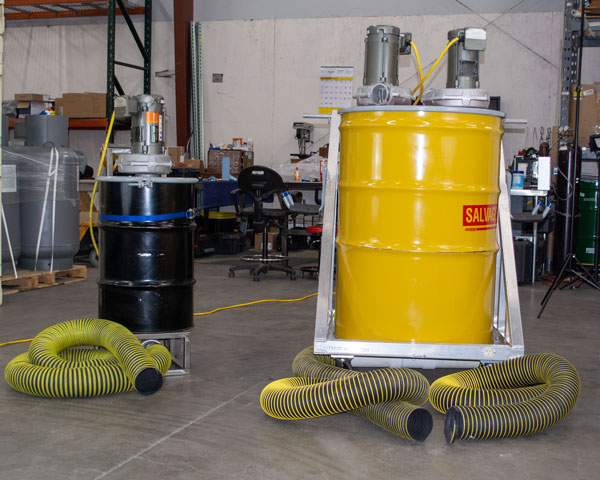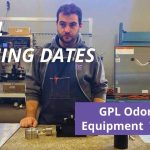A Growing Need for Mercaptan Odor Control
GPL Odorizers has released the GPL Odor eVac, a portable air filtration system for mercaptan odor control.
Mercaptan Odor Control Video
Mercaptans (thiols) have a malodorous smell and can become a health risk when exposed to them at high doses.
Mercaptans Formation
Mercaptans form when organic matter breaks down under anaerobic conditions and have detection thresholds as low as a few parts per trillion (ppt). Pungent mercaptan odors are problematic not only in the natural gas industry but also as a source of nuisance complaints near pharmaceutical production plants, food and beverage facilities, oil and gas processing sites, and industrial and municipal wastewater treatment plants.
As communities grow closer to out-of-the-way industrial and municipal facilities, there is an increasing need to control mercaptan odor.
Industrial Use of Odorants
Mercaptans are used as odorants to odorize gas. These odoriferous compounds are intentionally added to gases so people can detect the gas through smell.
The natural gas industry often needs to eliminate pungent mercaptan odor for safety reasons and to avoid a flurry of false leak call complaints. Mercaptan odor occurs during odorant spills, transfers, odorization equipment maintenance, equipment failure, pressure releases, pipeline pickling, or other odorant situations.
Methods of Mercaptan Removal
There are three main ways of mercaptan odor removal:
- Biological – breaking down the mercaptan molecules with bacteria and fungi
- Chemical – Inducing a chemical reaction with chemicals and water in a vessel to create byproducts that drain away while releasing clean air
- Physical – trap and remove the unwanted compounds with adsorption filters (e.g., activated carbon) in a vessel while dispelling clean air and disposing of the filter medium
GPL Odor eVac for Ethyl Mercaptan Odor Removal
GPL Odor eVac is a vacuum-like device that pulls contaminated odoriferous air into an activated carbon filter, removes the odor, and discharges odorless air back into the environment. This improves work conditions and creates a safer environment, reducing the risks of leak-call complaints.
The GPL Odorizers unit is a unique and newly patented system designed for portability. It can quickly and easily deploy when needed to evacuate mercaptan odor from a room or structure.
GPL Odor eVac Description
Pictured below are the 30-gallon and 110-gallon GPL Odor eVac systems.

The activated carbon filtration system removes odor associated with mercaptan liquid or gas through adsorption. The filter vacuum consists of an explosion-proof motor (Div 2) mounted on a steel drum with an integrated hand truck permitting swift and easy deployment. The filtration media stays in a DOT-approved drum until replacement. The Odor eVac provides long-term use, is easy to operate, and is simple to replace the activated carbon. The unit comes in three models, a 30-, 55- and 110-gallon drum style.
- 30-gallon Mobile Unit—Perfect for field deployment in emergencies or maintenance on lines, odorizers, or odorant injection systems. This unit evacuates up to 140 cubic feet/minute of active filtration.
- 55-gallon Unit—This unit is intended for operations in a building or a static location. It also has built-in wheels for easy mobility.
- 110-gallon Unit, aka “Big Bertha”—This dual-motor-driven unit moves about 300 cubic feet/minute and is intended for operations in a building or static location. It is very large and heavy, though it can quickly move with its built-in wheels.

